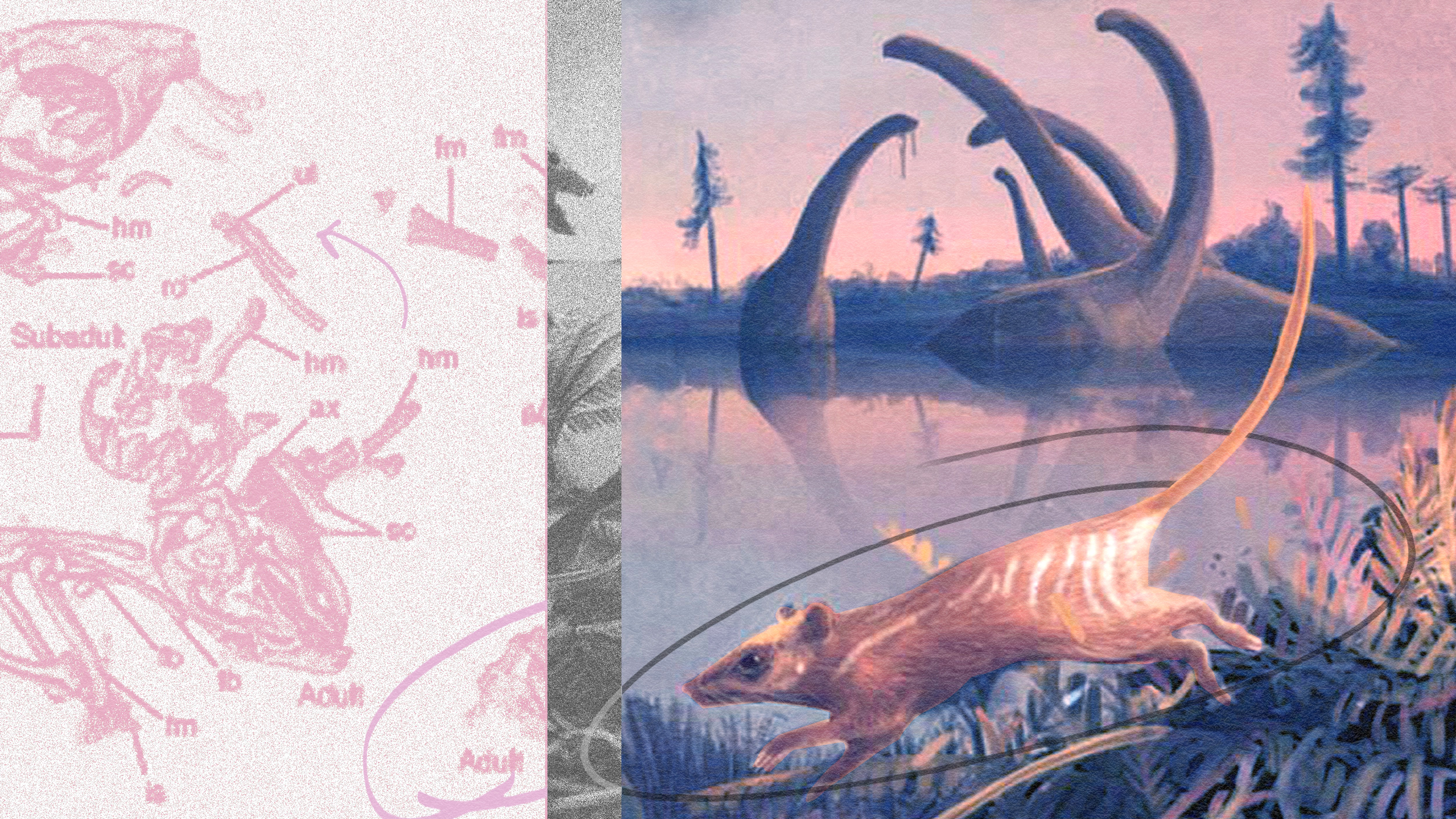This ancient crocodile walked on two legs ‘like humans’

(Photo: Anthony Romilio/University of Queensland)
As any schoolchild will tell you, crocodiles have remained unchanged for millions of years. These powerful ambush predators have evolved to fit perfectly within their niche. They are so successful that they survived the K-T extinction, outliving the dinosaurs and many other reptile species they once shared the planet with. Fossils have even been discovered that are virtually identical to today’s crocs, which is why they are often (and wrongly) referred to as “living fossils.”
That’s the extant lineage, though. Fossils have also shown crocodylomorphs, the group of archosaurs that include crocs and their relatives, to be a dynamic branch of the tree of life, and earlier crocodylomorphs weren’t as evolutionarily conservative as their contemporary cousins.
A recent discovery in South Korea suggests one crocodile relative even took to the land on its own two feet.

A photograph of Batrachopus grandis track impressions found at Jinju Formation.(Photo: Scientific Reports)Scientific Reports)
The evidence comes from trace fossils found at the Jinju Formation, South Korea. The site houses nearly one hundred 24-centimeter footprints made during the Early Cretaceous period (110–120 million years ago) in what was likely muddy sediment. Researchers originally believed these fossils were left by a pterosaur, a flying reptile that lived in that period.
“Fossil crocodile tracks are quite rare in Asia, so finding an abundance of nearly one hundred footprints was extraordinary,” Anthony Romilio, a paleontologist at the University of Queensland and a member of the research team, said in a release. “As an animal walks, the hind feet have the potential of stepping into the impressions made by the hand and ‘over-printing’ it, but we find no evidence of this at these Korean sites.
“It isn’t due to poor preservation either, because these fossils are spectacular, they even have the fine details of the toe-pads and scales on their soles preserved.”
That excellent preservation led researchers to reassess the fossils. They noticed the tracks were flat and sported deep heel impressions, meaning they weren’t left by dinosaurs or their bird relatives.
“They were moving in the same way as many dinosaurs, but the footprints were not made by dinosaurs,” Kyung Soo Kim of Chinju National University of Education, who led the research team, said in the same release. “Dinosaurs and their bird descendants walk on their toes. Crocodiles walk on the flat of their feet leaving clear heel impressions, like humans do.”
Based on the flat-footed gait and skin traces, the researchers concluded the footprints belonged to a Batrachopus, a type of crocodylomorph commonly found in Mesozoic North America.
But there is something unique about these tracks. A typical crocodile leaves a wide trackway due to its squat stance. Conversely, the Jinju trackways are very narrow. As Kim put it, they look like “a crocodile balancing on a tight-rope.” And while the site hosts well-preserved backfoot tracks, tail-drag marks and manus tracks (read: handprints) are conspicuously absent.
Taken together, the evidence suggests these crocodylomorphs walked on two legs. Based on the size of the footprints and their spacing, researchers imagined this crocodylomorph measured over three meters in length and strode on legs the same height as an adult human’s. They named their discovery Batrachopus grandis.
The researchers published their findings in the peer-reviewed Scientific Reports.
99.99% of species go extinct. What is humanity’s future?
For now, the only evidence for Batrachopus grandis exists in the footprints, so there’s still much to learn about it. In the study, the researchers note the possibility that this crocodylomorph didn’t take to the land but used its hind legs to propel itself through waterways.
Not all paleontologists agree with the study’s conclusions. Phil Manning, a paleontologist at the University of Manchester, who was not part of the research, told the BBC he found the trace fossils interesting but didn’t think a crocodilian was capable of producing them.
“Look at any videos of living crocs and the rotation of their feet when they’re galloping: it’s outwards, not inwards towards the midline of the trackway. Just from their orientation, it looks more like some kind of dinosaurian track-maker to me. But whether it’s a croc – unfortunately, we just don’t have the fossil bones to tell us,” he said.
If you had your heart set on a land-roaming, bipedal crocodile, don’t be disappointed. The ancient world was filled with enough strange and eerie crocodylomorphs to fill many a nightmarish menagerie.
In 2015, for example, paleontologists discovered a crocodile relative in North Carolina. This 9-foot-long apex predator also walked on two feet and ruled its Pangaean stomping grounds until the Triassic-Jurassic extinction event ended its reign. Paleontologists christened this species Carnufex carolinensis, or the “Carolina Butcher.”
There’s also evidence for crocodiles that snatched sauropods from the water’s edge, crocodiles that bounded through ancient forests on hooves, and crocodiles that enjoyed leafy flexitarian diets. Even their modern relatives continue to surprise us, such as their surprisingly agile tree-climbing abilities.
So while these ancient creatures may be extinct, they continue to evolve in our imaginations. We’ll have to see what science has in store for Batrachopus grandis as we discover more about it.





